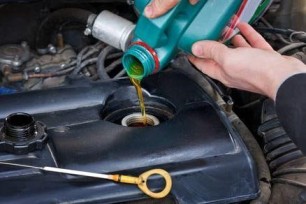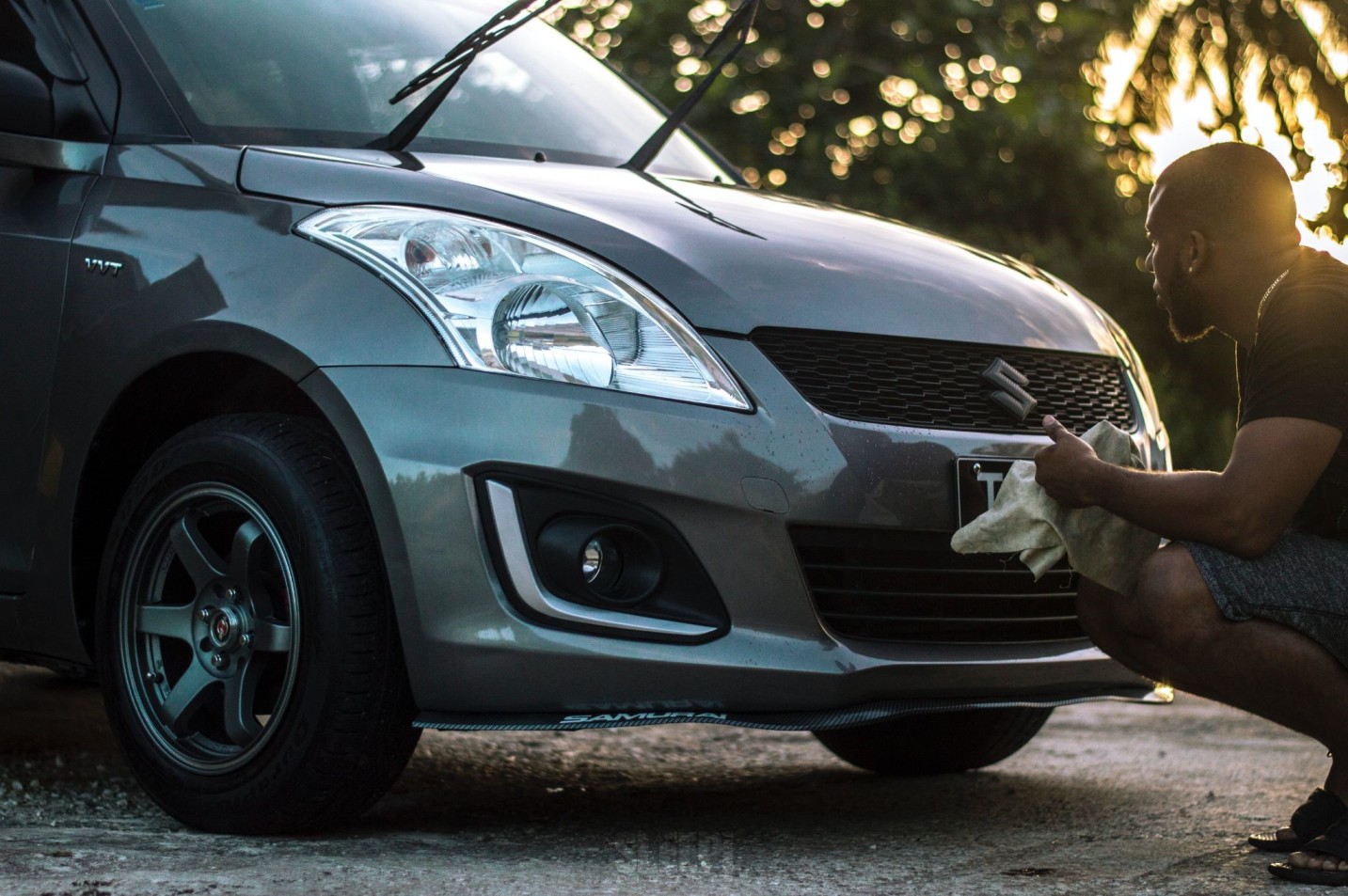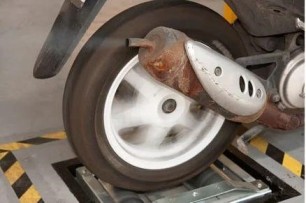General Insurance Blogs, Articles & Updates by - Magma Insurance
Have us call you
- RENEW YOUR POLICY
- BUY NEW POLICY

Eight signs that indicate an oil change for your car
Lubricating the car is essential to ensure your vehicle's overall fitness and functionality. The regular oil change is relatively an affordable maintenance task your vehicle requires, but the more important question is: How often should you change your engine oil? This entirely depends on the car’s usage. As a driver, you must look for typical signs your vehicle displays when it needs an oil change. You must detect the hints in advance to prevent them from developing severe damages.
This article will explain the top eight signs to heed that indicate an immediate oil change for your car.
• Check the oil change light. The engine sign will turn on if there isn’t enough oil in the engine. So, check the tank to discover what’s going on when the engine sign flashes.
• Engine knocking and noises. The oil acts as a friction barrier between engine components, preventing them from brushing and keeping the engine running silently. The engine noise will get intensified if the oil isn’t working perfectly.
• Change in the colour of the oil. The oil becomes darker and loaded with particles gathered from the engine as it gets utilized. Check your engine oil at least once every month by removing the dipstick from the oil tank. Make sure to wipe it clean before replacing it.
• Smoke from the exhaust. Your car’s exhaust always emits clear gas. But, if you observe smoke coming out from the exhaust, it’s time for a thorough engine inspection. It’s possible that you have a defective engine part or probably an oil leak.
• The odour of oil around the car. When you smell oil inside your vehicle, it’s usually a symptom of an oil leak. The car may overheat if you smell gasoline or vapours. In that case, you should schedule servicing right away after experiencing this.
• Excessive Travel. Consider an oil change quicker than the standard interval if you drive excessively. For example, you should change the oil every 10,000 km or half a year in new cars. For older cars, consider using high-mileage oil and change that every 5,000 Km.
• Fuel efficiency is poor. You would observe a decrease in fuel economy. However, this might indicate other issues with the fuel system, engine, or exhaust system. But an engine may fail to function if it isn’t getting adequately clean oil.
• The engine keeps stopping. If your car has been experiencing repeated engine difficulties, you should examine it. If your car stalls or feels like the engine seizes up at times, you might have low engine oil, poor oil, or an oil leak.
Only knowing how to drive a car isn’t enough; maintaining it is just as necessary. As with every other machine, your car won’t perform the best if not taken care of regularly. If you don’t change your car’s oil regularly, its performance can degrade quickly, resulting in catastrophic damage to your vehicle.
To avoid the consequences, you must watch out for indications that lead you to the warnings of an oil change. Like oil, your car insurance is another thing that needs continual renewal. Car insurances are financial saviours and are required when they are about to expire. Do not forget to check out your car insurance renewal dates and keep them updated to enjoy the uninterrupted benefits of the existing policy.
For your car insurance renewal, click HERE .
Disclaimer: The information provided above is for illustrative purposes only. To get more details, please refer to policy wordings and prospectus before purchasing a policy.

How to maintain the paint of your car
A shiny car with an attractive colour is a head-turner for anybody. After all, it's also a reflection of your personality. Yet, a few years down the line, the paint on the car usually loses its sheen and begins to look dull and dead. Failure to provide regular care to the car paint is the most common error car owners make.
Getting a brand new paint job can be heavy on your pockets and lower the value of your vehicle, but if you take care of things, your car's paint lasts for years. Along with below mentioned little important tips about proper care of the car's paint, we also recommend you to possess a car insurance that offers you coverage against any damages to the vehicle. You can also check online car insurance for the best premium.
1. Cover up your Car: Sometimes, the simplest of things are the most efficient ones. For example, putting a cover on your car for as long as possible is the key to preserving the paint. Also, owners who park their vehicles in an open area have to take special note of this point as their cars are more prone to damage by bird droppings, direct sunlight, and dust.
2. Regular Car Washes: A car wash at regular intervals would go a long way in protecting the paint of the car. However, only washing won't help; you need to wash it correctly to get the best results. For that, use a sponge, and a car shampoo specially made to suit a car's paint. Never use detergents and cloth. They cause more harm than good.
3. Drying is Equally Important: Washing alone isn't enough. If you leave your car to dry on its own, you're doing it wrong. The leftover water can cause a lot of damage to the paint. Always dry your vehicle right after a wash, that too in the correct way. Use a microfiber towel or a weave fibre cloth for the drying process.
4. Wax your car. Do not polish: While both of them are the techniques to bring out the sine on your car, there's a big difference between them. Polishing brings out the lower layer when a layer of the paint job is removed. On the other hand, waxing adds an extra layer of protection to the paint and is always suitable for your car.
5. Repair the damages: If your car has suffered from scratches and rust already, take the help of a car paint shop and repair the damages. The longer the scratches stay, the harder it takes to treat them and may permanently damage the paint job. The minor scratches can cause a lot of damage to the surrounding area of the body paint. So do not neglect these minute things and fix them before they create trouble for your car.
Additional coatings like vinyl wraps, paint protector film, and clear coat protectors can bring an extra layer of security for your car paint. Following these simple tips will surely turn your dull looking car into a shiny prize. As stated earlier, pick a suitable online car insurance plan as early as possible that will benefit you and your vehicle for an extended period.

Essential tips to buying a second-hand two-wheeler
Two-wheelers are the most preferred travelling option for people from home to the workplace as they help your way through traffic smoothly. Moreover, as they have become daily support for middle-class families, many have dreamed of buying a two-wheeler, mainly since the pandemic emerged.
There are plenty of benefits to buying a second-hand two-wheeler. But before you purchase one, there are a few important things you need to keep in mind to ensure that you get the best value for money. For example, you don’t want to buy a vehicle that troubles you with additional money on maintenance or repair.
Below are a few tips to help you get the best deals for your second-hand two-wheeler.
1. Understanding the purpose of your vehicle:
If you need a vehicle for long trips, you will have to search for a high-performance touring bike to make your journey pleasant. Similarly, if you need a two-wheeler for your daily use, you may look for a comfortable motorcycle or scooter with a decent average.
2. Finding where you can purchase two-wheelers:
There are plenty of resellers available, both online and offline. You can directly approach offline showrooms of used two-wheelers or ask your friends for referrals. You can also check for resellers online to find a credible seller. It always helps if you connect with them in person and understand all the details.
3. Check the two-wheeler thoroughly:
Sometimes what you see online can be deceiving. Therefore, it is essential to check the vehicle personally. When you check the two-wheeler in person, you can observe the minor details such as any scratches, dents, and how well it is maintained. No matter where you buy the vehicle from, there are two necessary checks:
• Mechanical check
• Paperwork
In mechanical check, always look out for any rust, scratches, engine check, oil check, oil leakage (if any), dents, mileage, accident damage, brakes, air cleaners, gears, clutch, how many kilometres it has run already, and more.
Similarly, you need to check for a PUC certificate, RC book, service history, tax certificate, NOC, and more for paperwork.
4. Ask for a test drive:
The best way to know if the vehicle works appropriately and suits you the best is to take a test drive. Taking a test drive will help you understand if you are comfortable with the bike’s performance and power. Even if your bike looks perfect, it may not be a comfortable ride for you. Therefore, ensure that you do not miss out on the test drive.
5. Know the market value and negotiate well:
Once you are satisfied with the vehicle’s condition and the documents, you can do thorough research online about the current market value of the two-wheeler you are purchasing. You can talk to the seller and negotiate for the final price you are willing to pay. Once you and the seller come to a final price, you can sign the official paperwork and make the payment!
The tips mentioned above can help you pick the best two-wheeler and ensure that you are getting the best deals! But remember that buying a second-hand two-wheeler is just the first step. You need to ensure its safety by adding a layer of protection in the form of 2 wheeler insurance. You may opt for 2 wheeler insurance online and avail exciting deals and lower premium options offering the best value-to-your-money.
Click HERE to buy 2 wheeler insurance online for your two-wheeler.
Disclaimer: The information provided above is for illustrative purposes only. To get more details, please refer to policy wordings and prospectus before purchasing a policy.

How to keep your blood sugar under control
“Blood sugar” is termed as the amount of sugar present in the bloodstream of a body at a given time. Glucose is known to be the primary source of energy for a body. Therefore, having a stable blood sugar level is immensely important to carry a healthy lifestyle.
If the sugar level is disturbed, it can result in dullness in energy, anxiety, moodiness, fatigue, improper sleep, food cravings, brain fog, and diabetes if ignored for a longer time. Blood sugar can get out of control for two major reasons: either too much glucose or too little glucose for the body. In the first condition, your body gets more sugar than the body is habitual to, and in the second case, sugar is supplied in an inadequate amount. A balanced sugar level ensures sufficient quantity of glucose in the body.
Let’s understand 6 effective ways to keep your blood sugar level stabilized:
1. Daily exercise – Regular exercise helps maintain weight and improves insulin receptivity. An increase in the receptivity of insulin simply means better absorption of the sugar existing in the body. So remember, daily exercise is the most crucial aspect of the blood sugar management plan, and you should not skip it.
2. Tracking sugar levels – Monitor your blood sugar at regular intervals. It helps you track the sugar level and the changes you need to keep the levels managed.
3. Keep an eye on your diet – A well-planned diet is necessary for keeping blood sugar in control. The carbohydrates from foods are further broken down into sugars to provide a source of energy to the body. Hence, a low-carb and more fibre diet is ideal for balanced sugar levels. A rich fibre diet plays a preventative role and helps maintain your blood sugars.
4. Hydration – As a means to prevent your kidneys from flushing out the excess sugar in case of dehydration, drinking enough water throughout the day is very necessary. Water also ensures a lower risk of high blood sugar.
5. Quality sleep – Improper sleep or lack of adequate sleep can affect blood sugar and insulin receptivity. It releases growth hormones which may lead to weight gain and disturb the production and supply of sugars in the body. Avoiding caffeine before going to bed and sleeping in a cool and dark room helps you with a sound sleep.
6. Moderation – Maintaining moderation in daily activities will eventually lead to balanced blood sugar levels. Therefore, diet, weight, and proper exercise should be in a calculated proportion. Small steps to keep you active in the right direction can yield significant results in improving or preventing blood sugar.
Any diabetic person is not restricted from having health insurance and can get help for the care through a good health insurance policy. There is coverage of both type 1 and type 2 diabetes in a diabetes health insurance policy. In addition, health insurance also provides features such as illness related to diabetes and all costs and expenses for the treatment. Health insurance with Medicare advantage plans will also cover the cost of insulin. Make sure to check the benefits of the health insurance before you buy a health insurance policy.
WANT TO BUY AN IDEAL HEALTH INSURANCE PLAN? CLICK HERE FOR MORE INFORMATION…

